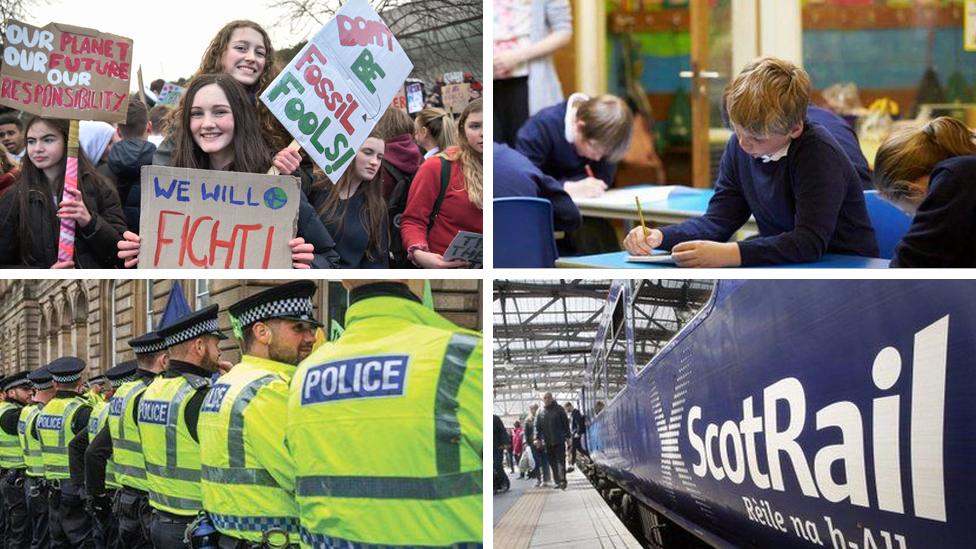A twist in the familiar tale of cuts
- Published
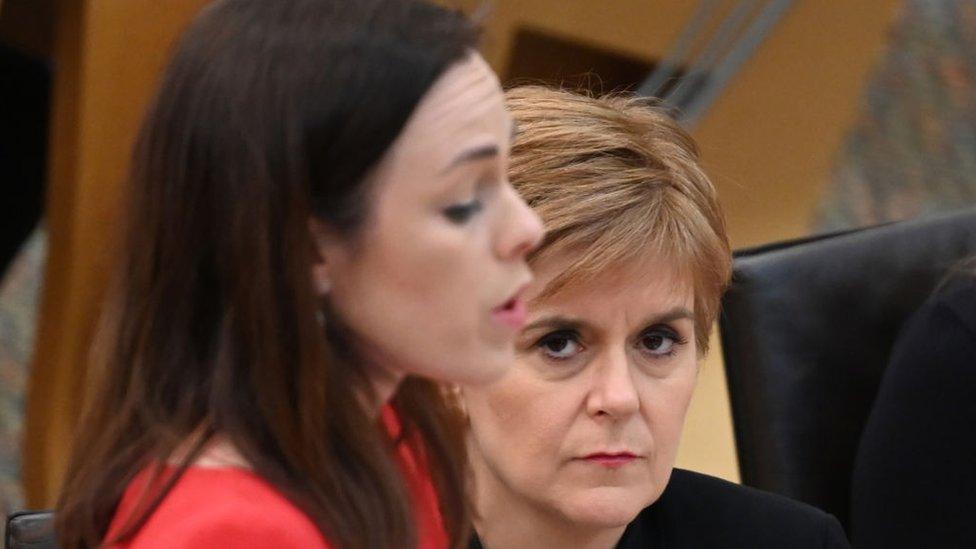
Kate Forbes, watched by First Minister Nicola Sturgeon, became the first woman to present a budget at Holyrood or Westminster
The Holyrood budget had little to do with austerity. It was modest in its ambitions, but political too.
The big themes included the environment, children in poverty and re-balancing the tax burden.
The background economic story is not looking good, with growth sluggish and red flags being raised more widely.
At last, a budget that wasn't dominated by austerity. It's not that the impact of the 10-year squeeze has gone away. But the draft Holyrood budget was more about a positive, though modest, range of choices than about the familiar tale of cuts.
Amid the numbers issued with Thursday's draft budget for Holyrood was an assessment of the journey from 2010, as Conservative chancellors sought to "consolidate" the budget, and get the deficit down.
By 2016-17, the real terms impact of the squeeze on Scottish government funding brought spending 8.3% below the previous peak of 2010-11.
Since then, the grip of the Treasury has been relaxed. The shortfall on 2010 levels fell to 1% in real terms during the current year. At last, it turns positive in 2020-21, at 0.9% above the level a decade ago.
So, it's as you were? No. During that time, the demand on the budget has changed. Health and social care gobbles up an ever-bigger chunk of it.
Together, that budget has topped £15bn for next year. With health costs, expectations, chronic conditions and demographics, that's only likely to go in one direction.

The health service accounts for a huge part of government spending
It is local authorities that have faced much of the squeeze. They get £500m more out of the 2020-21 budget, but much of that is earmarked for the Scottish government priority of childcare and to fund a second year of the teachers' pay deal, as well as pensions.
Belching
As with any half-decent budget, Kate Forbes - the first woman to present and manage a budget at Holyrood or at Westminster - had political priorities in mind. She aimed to please or placate every lobby group - or at least, groups that vote.
This will be the last financial year before the next Hollyrood election, so it has a political job to do. Here, then, are three themes.
Climate change is requiring some big shifts in spending priorities. Add up all the elements, and you get to quite a lot that's intended to impress on visitors to Glasgow's mega-conference in November that Scotland is making an effort on reducing harmful emissions.
That includes funds to replace gas heating for homes and businesses, with a shift to district heating schemes.
They will require a lot of pipework, so the money is only a down payment on a lot of work yet to be done. It should be good for job creation though.
There's more to turn around the declining use of buses, and so-called "active" travel - cycling and walking.
Buses are being championed by Labour and the Greens, with similar calls for free tickets if you're under 25. Expect to hear more of that at next year's hustings.
With much bovine belching, farming is a major contributor to those damaging emissions, and there is a down payment to help spark the change that will be required to agricultural practice.
Forestry already has an ambitious tree-planting schedule, at 12,000 hectares a year. That's being stepped up to 15,000 hectares, using leaves to absorb carbon dioxide.
Likewise, peatlands act as a carbon sink. Protecting and enhancing that role is getting more funds from April, and a big SNP election pledge of £250m over the next 10 years.
Legacy
Theme two: families and poverty. While the really big number being added to this year's budget is the £3bn of Westminster welfare spending being devolved to Holyrood, only one minor change is scheduled to come in any time soon - a Scottish child payment.
Other changes to disability living allowance and to attendance allowance will have to wait until the systems are ready for divergence, and until ministers can see how much a more generous welfare system is likely to cost them.
But underlying recent budgets at Holyrood has been the expensive project of expanding childcare to hit the target intended for the 2021 election. That works for parents (mostly mothers), it helps with early education and with relieving stress on the many families living in poverty.
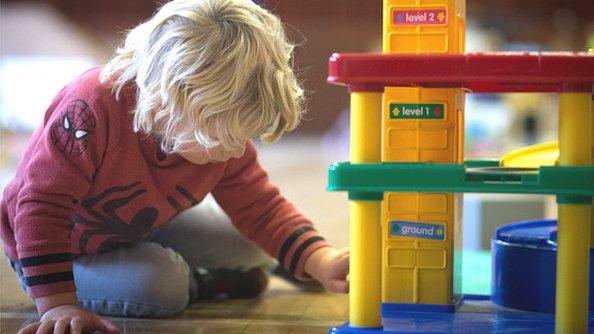
The Scottish government has said tackling child poverty is a priority
That is what Nicola Sturgeon wants to take to the electorate next year, having chosen this over other possible priorities. It's about legacy.
The Joseph Rowntree Foundation, with expertise in poverty policy, praises the Scottish government for its child payment, but says the 2020-21 budget choices do not go far enough.
Scottish director Jim McCormick is looking for a longer-term commitment to lowering the cost of housing, and to a deeper, more sustained commitment to those in poverty despite being in work. Two thirds of Scottish children in poverty are living in such households.
Fiscal creep
Theme three: being progressive. That means a shift of the tax burden towards those better able to shoulder it.
The risk is that pushing that re-balance so far that it proves counter-productive. This budget made only a modest change in that direction. Those earning up to £43,431 will see tax thresholds rise with inflation. That means their tax bills, on a given income level, will take no more off them in real terms.
But those with earnings above £43,431, that threshold will remain the point at which Scottish ministers begin to take 41 pence of every extra pound they earn.
That's what they call "fiscal creep": as earnings go above that level, people move into the higher tax bracket, and as pay goes up with inflation, the Scottish government takes a bigger chunk of it.
Mind the gap
Not knowing what Sajid Javid will do with his tax choices on his budget day, March 11, we don't yet know how Scottish tax will compare with that in other parts of the UK.
There have been hints that the chancellor will shift the threshold at which people start paying National Insurance contributions. Being undevolved to Holyrood, that would not alter the relative tax bills.
But as things now stand, the gap has quite a significant look to it at higher income levels. The Chartered Institute of Taxation has helpfully provided me with a ready reckoner.
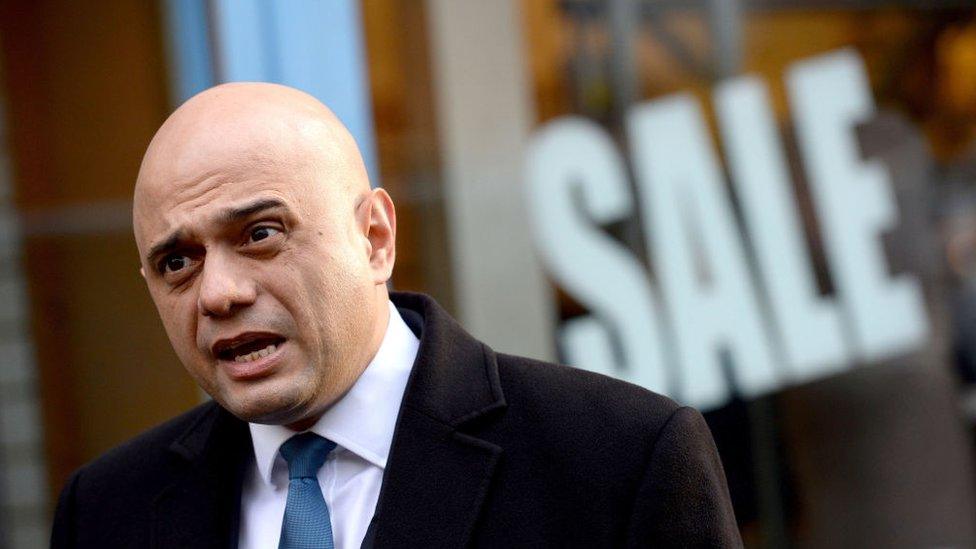
Chancellor Sajid Javed is yet to reveal his tax plans
It shows that Scots paying tax on lower levels of income are a whole £21 better off than those on the same pay down south. The level at which Scots start paying more in tax than someone on the same pay in England has gone up by £250, to £27,243.
If you're on £40,000 a year, the gap is only £128. Not much to ask for free prescriptions etc?
But on a £50,000 salary, that rises to £1,542 (£,7500 income tax paid south of the border, and £9,042 in Scotland). On £100,000, the gap is just over £2,000.
Fragile
Looking back over the past decade, getting up the pay scale has also been proving tough. The Scottish Fiscal Commission published its updated assessment of the Scottish economy and revenue, alongside the budget.
It reflects the state of the Scottish economy, and it's not looking that healthy. Employment levels remain strong, even though a gap with the rest of the UK has opened up recently.
Growth was weaker than forecast last year, at 0.9%. It's little better this year, at only 1%. That barely grows in the next few years.
That has a lot to do with productivity growth. It is up on a dismal 0.3% in 2019, but at 0.6%, that's a dispiriting measure of how much more prosperous we can expect to become this year.
There are new measures in this budget intended to help. Capital funding for the Scottish National Investment Bank is one of the bigger items, though it's hardly a quick fix. Others are more modest.
Evidence from business has recently suggested more clarity about Brexit, following the December election, has helped unlock some more business activity. But it's not yet looking like a game-changer.
The economic end of Brexit uncertainty continues. It's still a drag on business confidence. And the potential impact of coronavirus is raising red flags about supply chains and travel disrupted, bringing a sharp decline in global growth. Beyond Holyrood, the wider economy looks fragile.
- Published6 February 2020
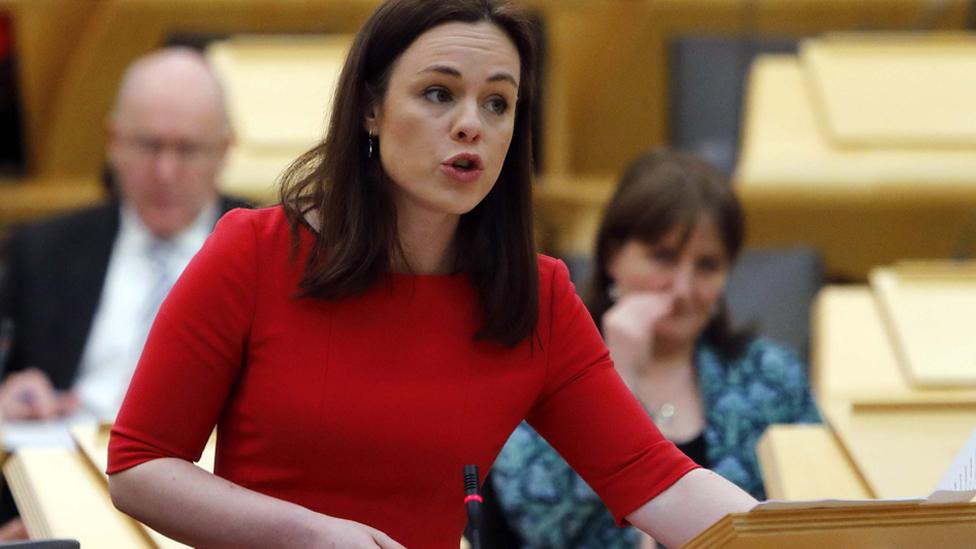
- Published6 February 2020
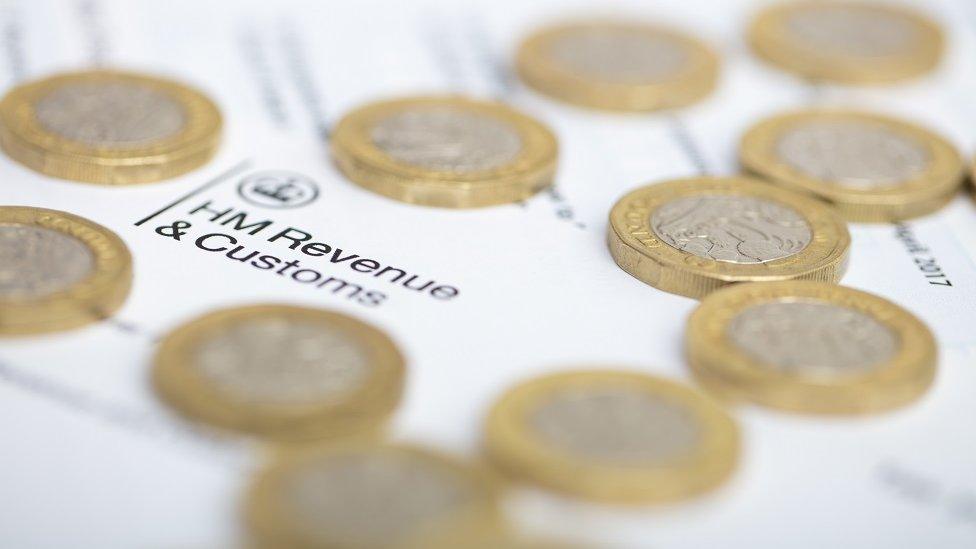
- Published6 February 2020
